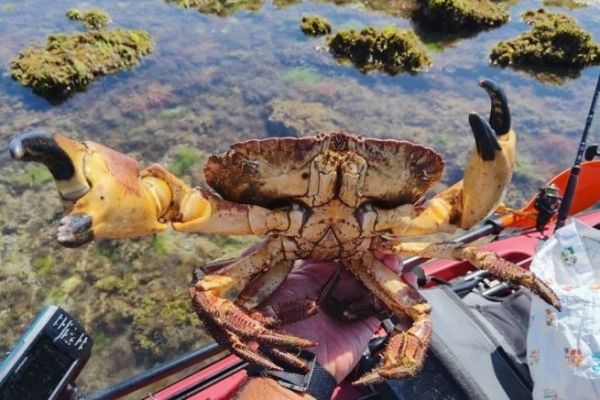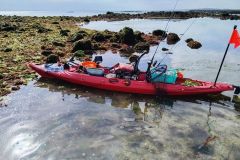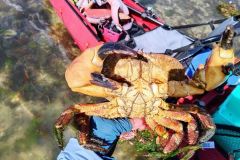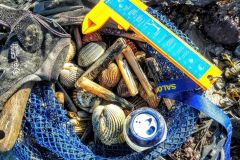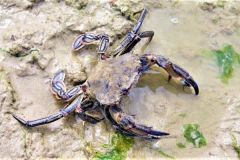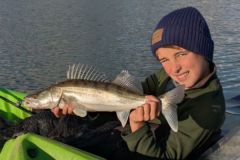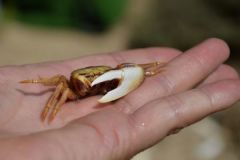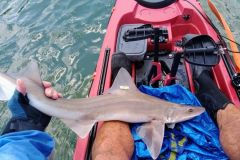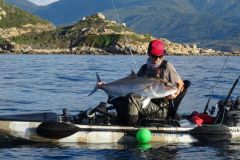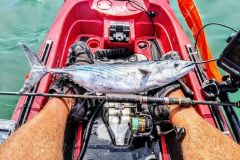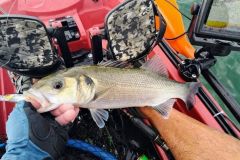Calamari and cuttlefish to tide you over
As the water is warmer, I avoid picking up burrowing shellfish for consumption, so all that's left are Dungeness crabs and étrilles, here it's the sleepers we're interested in. There's a funny thing about the spots I frequent. I've seen it twice before, and I saw it again this time. Sleepers generally reproduce in winter. However, on some of my crabbing spots, they gather in large numbers, males and females mixed together. There's no need to lift tons of rocks or play with hooks. They bury themselves in the sand, often in current veins. I think this is due to warmer waters. They are looking for more oxygenated waters and the freshness of current veins as the tide goes out. I observed this phenomenon again during the late August tides.
Of course, to wait for the foreshore to open up, I took my rods with me. And my jigs, because another piece of good news is that the squid are back in droves. Still using the Tataki method, which I've already mentioned in a few articles. This time, it was the flashy pink color that worked well. An Aurie Q search double glow at the bottom and an ultra-floating calmero at the top, with a 60-gram lead underneath. The tidal current was quite strong, so this was the rig that worked well. Lots of cuttlefish too...
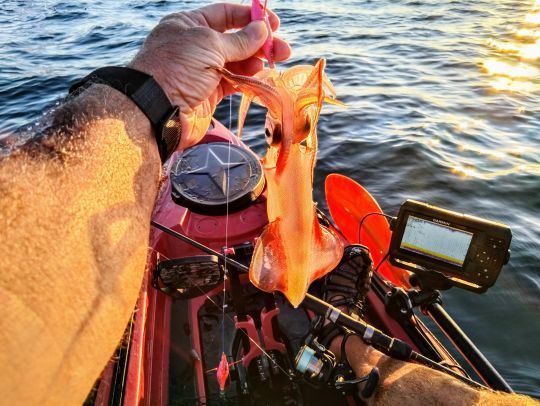
I also caught a few sea bass, mostly with swimming fish. I used the 3 DB Jerkbait in the 5/6 metre depths and the Deep Diver for the deeper areas, 2 Yo Zuri swimming fish. I also tried the soft scratch lure, but the large presence of cuttlefish did not favour this technique, as they will quickly destroy a lure body...
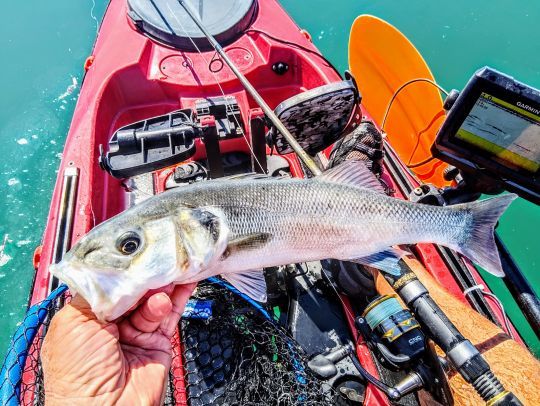
A beautiful gathering of crabs
Once the foreshore is sufficiently exposed, the rods return to the rod holders and it's off for a stroll among the pebbles. I take advantage of the fact that there's still about 50 cm of water to visit the foreshore with the kayak. I look for tongues of sand between the pebbles, preferably with an opening towards the open sea, to create the currents that interest the crabs. This way, I can spot concentrations of crustaceans. With practice, it's a bit like mushrooms: the crab's pattern in the sand is registered in the brain.
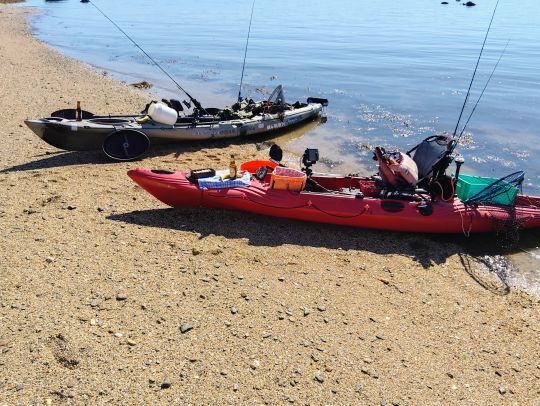
Once we've found the right spot, the kayak is placed on a rock, and we take the opportunity to have a snack and wait for the water level to drop again. Once rested, the harvesting can begin. Although the females are not grained, we don't pick them up, just the big males. It's easy to recognize them, the most obvious difference being the size of the tongue under the abdomen. This tongue is much wider in females. You can clearly see the difference in the video at the end of this article. This is a very pleasant way to stroll through the ponds, given the weather. It's also easier than lifting tons of pebbles: you walk around, spot them, bend down and pick them up.
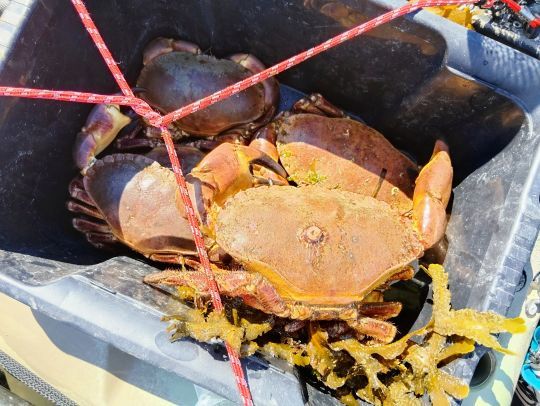
Our mesh is 15 cm wide, and the crabs we kept were all between 18 and 23 cm wide, quite heavy. In one of the attached photos, the Dungeness crab with its claws extended is wider than my front hatch, which is 53 cm. In the short video attached, you can clearly see this gathering, as we were able to observe up to 6 large crabs per m², males and females mixed together.
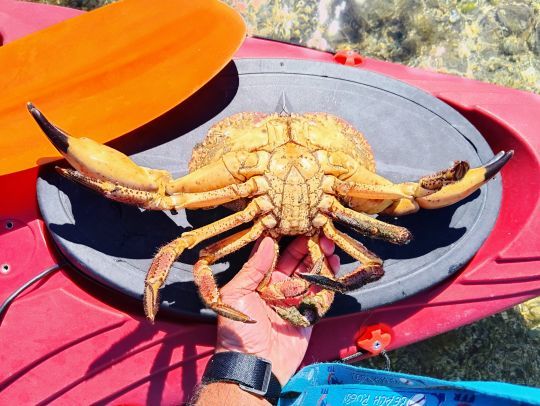
There may be a scientific explanation for these gatherings, but personally, the one put forward at the beginning of this article seems to me the best hypothesis: the search for fresher, oxygenated water. The foreshore never ceases to surprise.

 /
/ 